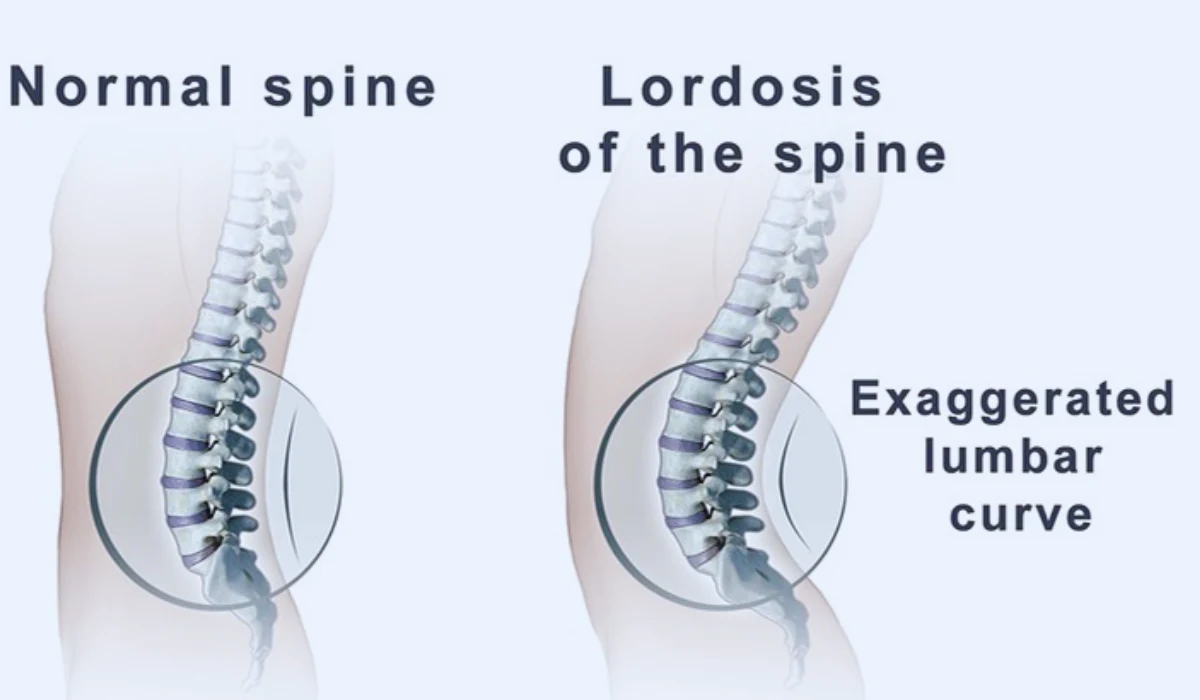Lordosis is an excessive inward curvature of the spine. It often disrupts peaceful sleep. This condition often makes it hard to sleep and leads to discomfort and restlessness. In this article, we will talk about effective sleeping positions for people with lordosis. We will also share exercises and helpful tips to manage and prevent this condition.
Lordosis affects the spine’s natural curve, primarily in the lower back and sometimes the neck. This exaggerated curvature can cause significant back pain and discomfort, especially when lying down. Understanding the specifics of lordosis, its causes, and its effects is essential in effectively managing its symptoms. Recognizing how it impacts daily activities and sleep is the first step toward finding relief.
The Importance of Proper Sleeping Positions
Choosing the proper sleeping position is critical for those with lordosis to minimize discomfort:
- Back Sleeping with Knee Support: Sleeping with your back with a pillow under your knee can help maintain the spine
- For side sleepers: Placing a pillow between the knees can keep the spine aligned and alleviate strain on the back.
- Avoiding Stomach Sleeping: Sleep often worsens lordosis symptoms as it can overreach the spine, increasing discomfort.
Exploring various sleeping positions and using pillows for support can significantly improve sleep quality. However, individual references and comfort should guide the choice of the best position.

Exercises to Relieve Lordosis Symptoms
Regular exercise is crucial in strengthening the muscles that support the spine, which, in turn, can alleviate the symptoms of lordosis
- Pelvic Tilts: These exercises focus on the abdominal and lower back muscles, offering better support to the spine.
- Bridges: By strengthening the lower back and hip muscles, bridges are essential to spinal health.
- Plank exercise: Planks effectively build core strength and stability, which is crucial for spinal support.
- Leg Raises: Targeting the hip flexors, leg raises are particularly beneficial for individuals with lordosis.
- Stretching Routines: Regular stretching helps lengthen and relax the spine, relieving discomfort.
Integrating these exercises into a daily routine can significantly minimize the symptoms of lordosis and improve overall spinal health.
Lifestyle Adjustments to Support Spinal Health
Making small changes to your daily routine can significantly impact your spinal health
- Weight Management: Keeping healthy is crucial as extra weight can strain the back.
- Regular physical activity: promotes spinal flexibility and strength, which are key in managing lordosis.
- Ergonomic practices: Good posture, especially while sitting for extended periods, is vital for spinal health.
- Choosing the Right Footwear: Supportive shoes help maintain correct spinal alignment and posture.
These lifestyle modifications can aid significantly in managing lordosis and improving overall well-being.
When To Seek Medical Advice
It is essential to seek medical help if one experiences constant pain, increased curvature, or symptoms like numbness or weakness. These signs could be of a more serious condition that requires medical attention. One must seek medical assistance when home remedies and exercises do not provide relief.
✅ Diagnosing and Treating Lordosis
Diagnosing lordosis typically involves a physical examination and imaging tests like X-rays or MRIs. treatment varies based on the severity and may include physical therapy, orthotic support, or, in severe cases, surgery. Early diagnosis and treatment are vital to managing lordosis effectively.
✅ Preventive Measure For Lordosis
Preventing lordosis requires a combination of lifestyle choices and awareness. Regular exercise, maintaining a healthy weight, and good posture are crucial. Regular health screenings can also help detect early signs of spinal issues, allowing for timely intervention.
Dos
- Sleep on your back with a pillow under or between your knees.
- Do exercises like pelvic tilts, bridges, planks, and leg raises.
- Stretch regularly.
- Keep a healthy weight.
- Stay active and keep your spine flexible.
- Sit with good posture.
- Wear supportive shoes.
Don’ts
- Don’t sleep on your stomach.
- Don’t ignore constant pain or symptoms.
- Don’t ignore constant pain or symptoms like numbness.
- Don’t live an inactive lifestyle.
- Don’t wear unsupportive shoes or sandals.
Managing lordosis effectively requires a holistic approach that includes the proper sleeping positions, regular exercises, lifestyle adjustments, and seeking timely medical advice. Individuals with lordosis can improve their sleep quality and overall quality of life by taking these protective steps.